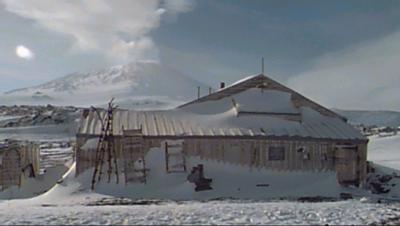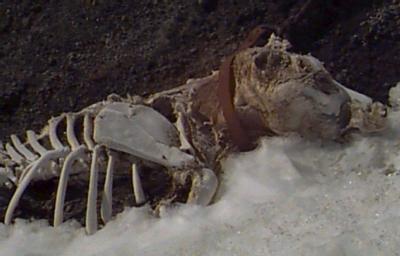
|
|
15 October, 1996
In order to collect new species of invertebrates, Jim and Bill directed the
dive team to an ecologically different site. This new site was at Cape
Evans, which is at the base of an active volcano, Mount Erebus. It took two
hours to drive across the sea ice in a heated spryte, using a sophisticated
communication system to ensure our safety. Before the day was over we would
have a better understanding of how much different it was for the first
scientists and explorers that worked in Antarctica.
Our dive hut was about 200 yards from the spot where Robert Scott set out
in an attempt to become the first person to reach the South Pole. In 1911,
Scott and his crew, along with 19 Siberian ponies and 34 dogs landed at Cape
Evans and constructed a hut that still remains. In October of that year an
expedition of sixteen left the hut for the pole. On January 12th 1912, Scott
and three others reached the South Pole only to find that a Norwegian team,
lead by Roald Amundsen, had arrived three weeks before them. Weakened and
with few supplies, the defeated team unsuccessfully attempted to return.
Their frozen bodies were found almost a year later within eleven miles of
one of their supply camps. After finding the bodies of their comrades, the
remaining crew closed the camp and returned to New Zealand.
After our science operations were completed we decided to explore the hut.
When we opened the door to the darkened building, we entered into the
stables where the ponies and dogs had been kept. We found bales of hay in
the stalls, a box of penguin eggs, an open box of biscuits, and tins of
cheese. For eighty-four years the cold dry climate had preserved everything
just as the early explorers had left it on their departure. There were boxes
and bottles of food, clothing, and scientific equipment. Outside there was
the skeleton of a dog, its collar still around the neck, chained to a rock.
I had a feeling that the men had left the building on a work expedition and
would be returning at any time.
When Bill came into the hut he was carrying a bottle that he found on the
ocean bottom during a dive earlier in the day. We noticed a similar vinegar
bottle was on one of the shelves in the food pantry. He quietly left the
bottle in the hut where it originated. The Antarctic Conservation Act
prohibits the collection of artifacts. The people here seem to have an
appreciation for the fragility and beauty of this environment and take its
conservation very seriously.


Contact the TEA in the field at
.
If you cannot connect through your browser, copy the
TEA's e-mail address in the "To:" line of
your favorite e-mail package.
|
